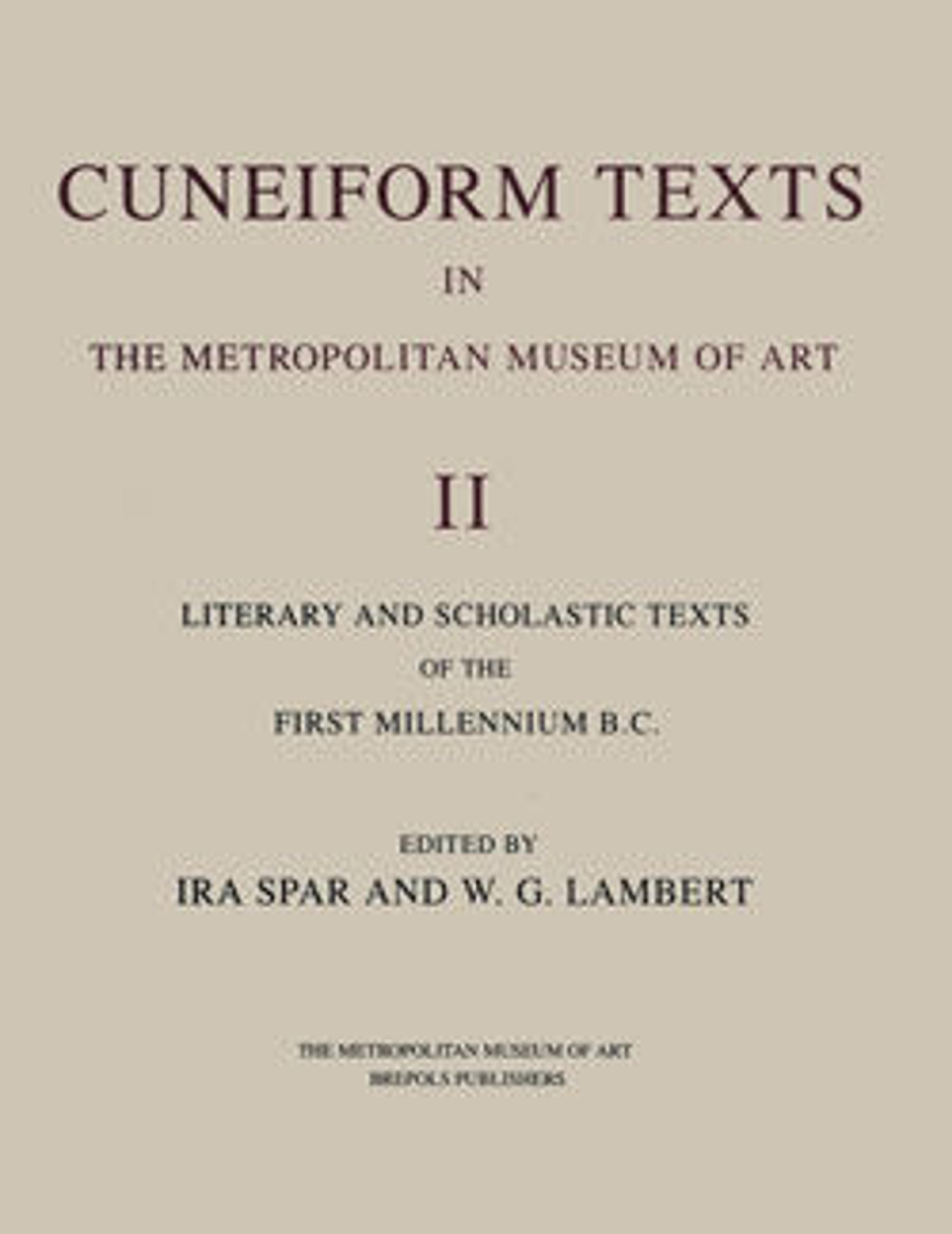Cuneiform tablet: vocabulary of food and drink terms, Urra=hubullu, tablet 23
The invention of writing in approximately 3300 B.C. was one of many developments in administrative technology--including the use of geometric tokens for counting and cylinder seals to guarantee transactions--that accompanied the growth of the first cities and states in southern Mesopotamia. Proto-cuneiform is the name given to the earliest form of writing--pictograms that were drawn on clay tablets. Gradually, the pictograms became abstracted into cuneiform (Latin, "wedge-shaped") signs that were impressed rather than drawn. At its greatest extent, cuneiform writing was used from the Mediterranean coast of Syria to western Iran and from Hittite Anatolia to southern Mesopotamia. It was adapted to write at least fifteen different languages. The last dated cuneiform text has a date corresponding to A.D. 75, although the script probably continued in use over the next two centuries.
This clay tablet, partially broken, is divided into three columns which read from left to right. The tablet records food and drink terms, first in the long-dead Sumerian language, and then in Akkadian translation. This text is known to be the twenty-third tablet in a series of tablets that collected and codified knowledge of the civilized world. Beer and food items listed in this text were an essential part of ritual knowledge as they formed the basis for the daily feeding of the gods in their temples.
This clay tablet, partially broken, is divided into three columns which read from left to right. The tablet records food and drink terms, first in the long-dead Sumerian language, and then in Akkadian translation. This text is known to be the twenty-third tablet in a series of tablets that collected and codified knowledge of the civilized world. Beer and food items listed in this text were an essential part of ritual knowledge as they formed the basis for the daily feeding of the gods in their temples.
Artwork Details
- Title: Cuneiform tablet: vocabulary of food and drink terms, Urra=hubullu, tablet 23
- Date: ca. late 1st millennium BCE
- Geography: Mesopotamia, probably from Babylon (modern Hillah)
- Medium: Clay
- Dimensions: 4.5 x 5.12 x 2 in. (11.43 x 13 x 5.08 cm)
- Credit Line: Purchase, 1886
- Object Number: 86.11.368
- Curatorial Department: Ancient West Asian Art
More Artwork
Research Resources
The Met provides unparalleled resources for research and welcomes an international community of students and scholars. The Met's Open Access API is where creators and researchers can connect to the The Met collection. Open Access data and public domain images are available for unrestricted commercial and noncommercial use without permission or fee.
To request images under copyright and other restrictions, please use this Image Request form.
Feedback
We continue to research and examine historical and cultural context for objects in The Met collection. If you have comments or questions about this object record, please complete and submit this form. The Museum looks forward to receiving your comments.
